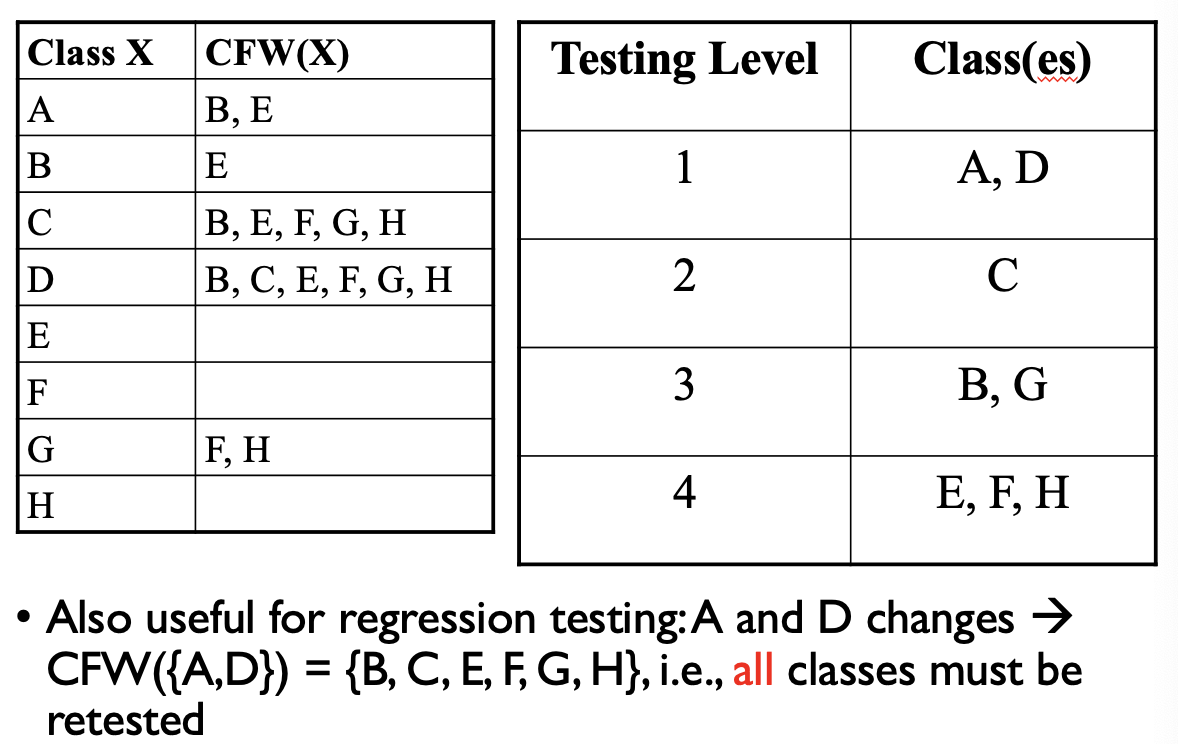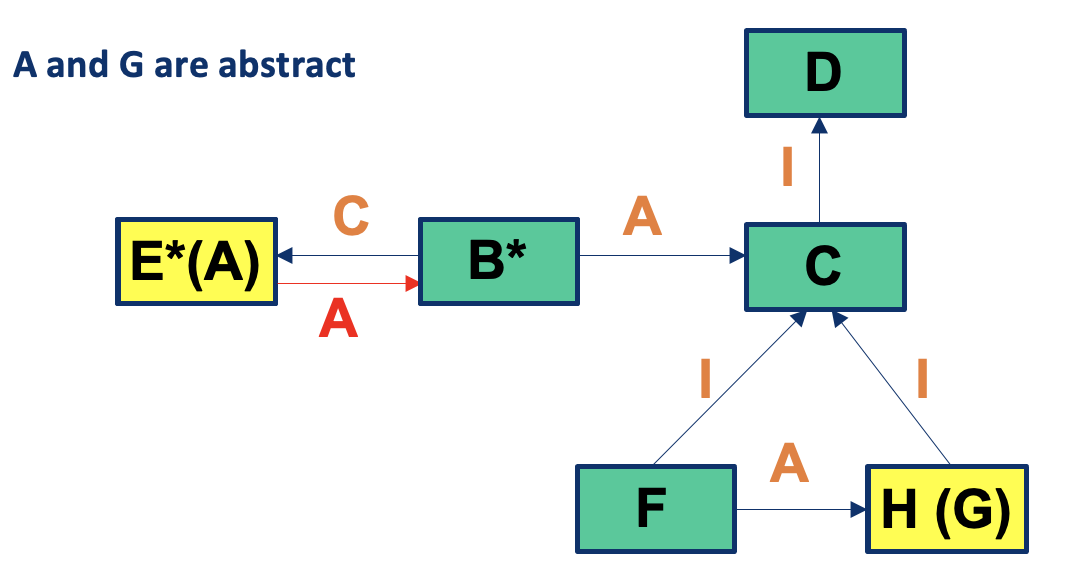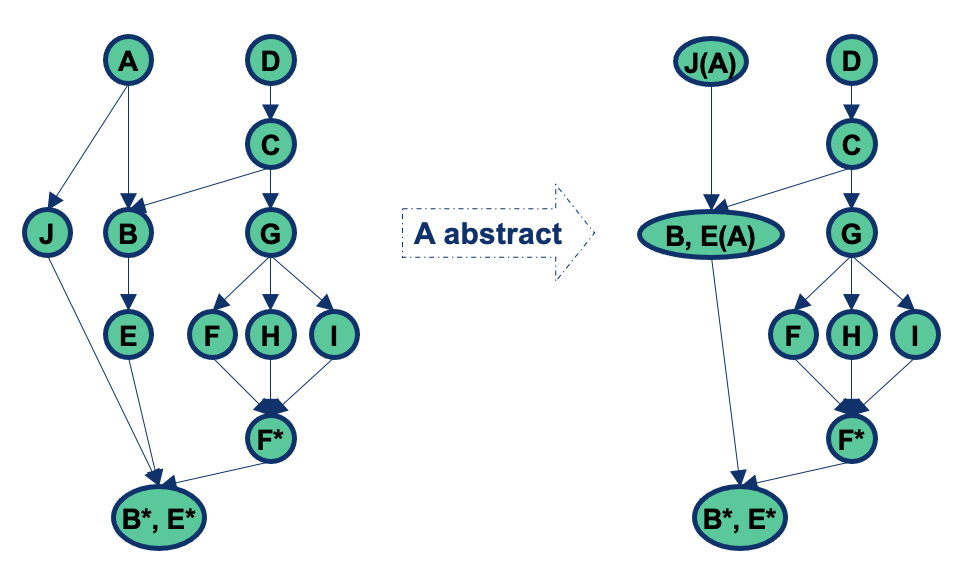Object Relation Diagram (ORD)
Defining the ORD
- Class dependency information in Object Relation Diagram (ORD) can either come from reverse engineering or design documentation (e.g., UML)
- Straightforward for UML
- Inheritance, composition, association in UML map directly to ORD
- How should interface be handled?
- From source code?
- Inheritance, interface?
- Typically clear
- Association or composition?
- E.g., in Java, fields with type of other class
- Lifecycle is linked for composition (may be tricky to determine with automatic garbage collection)
- Inheritance, interface?
Prof's note
Composition is strong form of aggregation (where deleting whole deletes the parts too)
Difficult to determine in Java due to garbage collection
- From source code?
- What about dependencies that are not expressed by inheritance, composition, or association?
- E.g., a factory creates an object and returns it to the caller (Relationship of factory with class of the object is not inheritance, not composition, and not association – there is no field in the factory with the class as its type! However, the factory cannot be tested without the class.)
- E.g., passing in an object as a parameter
- E.g., creating an object in a method as a local variable
- Dependencies like that also need to be captured with an A edge in the ORD
Note
Look at the imports for clues!
Example Test Order
More in Integration Order…


How to determine the Testing Level? I don't understand this step
When i did the example, I just went from bottom to top, so I started with E,F,H as the bottom level. Then I check the next classes that requires E,F,H and those would be a level up, and so on.
The Abstract Class examples are very hard to grasp
Abstract Classes
- Some testing levels become (partly) infeasible because of abstract classes (shown in italic)
- If A is an abstract class, testing it at level 1 is unworkable
- Testing B at level 3 now requires subclass E to be instantiated (instead of A)
- E cannot be tested after B

- and same Testing level table as before (same example)
A and G are abstract:


ORD Example (II)
A is abstract (shown in italic).
Integration Order (II) A is abstract


